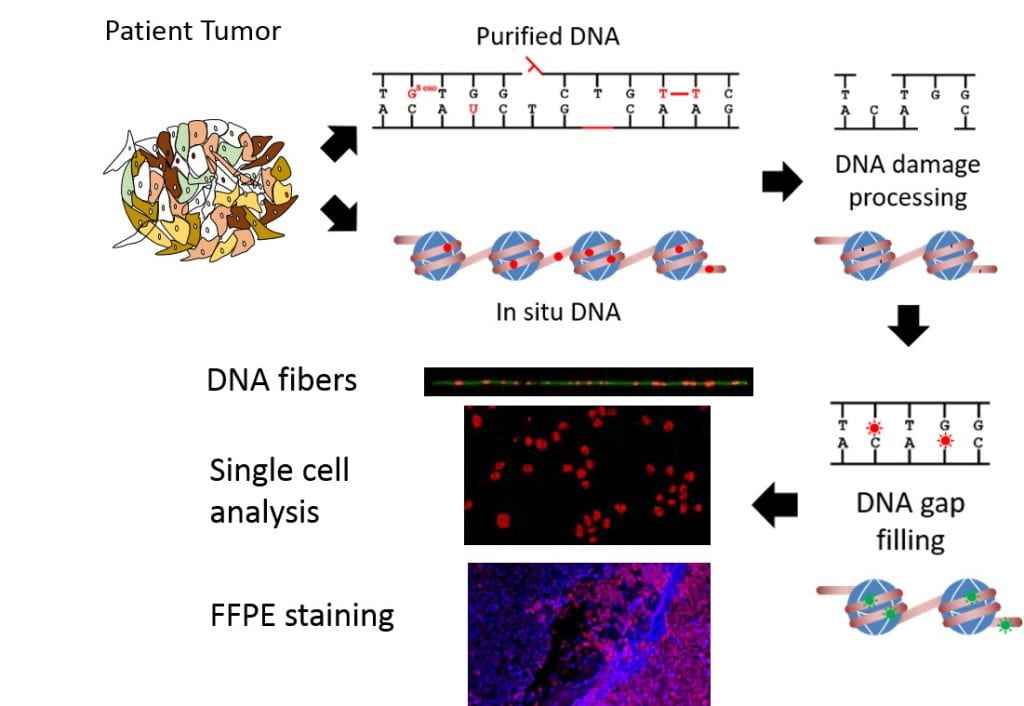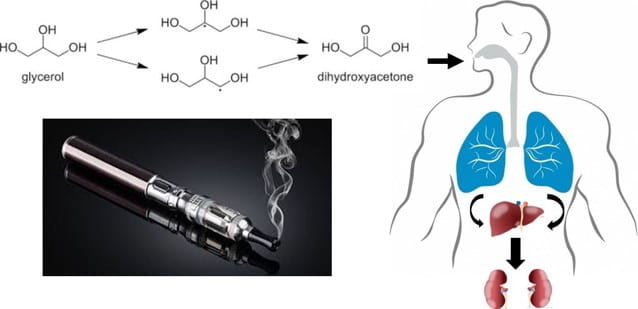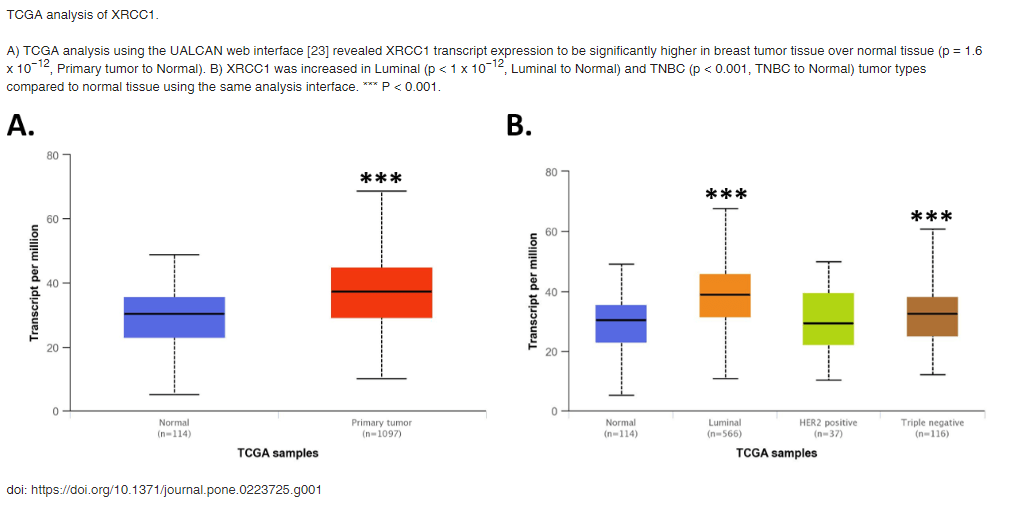Current Research

RADD- Repair Assisted Damage Detection
We have developed an easy-to-use, flexible DNA damage measurement assay. Using DNA repair enzymes, we can label sites of DNA damage in isolated DNA, cells, and tissues to understand the DNA damage landscape. We have been applying these techniques to various cancers and to examining DNA damage levels from environmental exposures.

Understanding cellular consequences of dihydroxyacetone exposures
Dihydroxyacetone (DHA) is the active ingredient in sunless tanning products and is produced by electronic cigarettes (e-cigarettes). Once inhaled or absorbed, DHA rapidly enters the bloodstream and is quickly transported into cells. DHA is then converted into its phosphorylated form, dihydroxyacetone phosphate (DHAP), entering multiple metabolic pathways. We have been characterizing the cytotoxicity and genotoxicity of DHA to better understand its exposure effects for e-cigarette users. DHA is cytotoxic across several cell line models, and its effects are highly cell-type specific. We continue to expand our knowledge of this molecule and its impact on cellular function and human health.

Base excision repair defects and their influence on chemoresistance
Our lab also examines changes in the expression of key base excision repair proteins in breast and other cancers. These changes can be induced by environmental exposures and endogenous metabolic changes. Dysregulation of DNA repair proteins offers new opportunities for molecular targeting, and understanding the mechanism underlying changes in expression and function of these proteins is critical to improving cancer outcomes.
If you are interested in the RADD assay or our other projects, don’t hesitate to reach out!
Selected References for our areas of research
- Lee KJ, Mann E, da Silva LM, Scalici J, Gassman NR. DNA damage measurements within tissue samples with Repair Assisted Damage Detection (RADD). Current Research in Biotechnology. 2019 Nov 15; 1:78-86.
- Mann E, Lee KJ, Chen D, da Silva LM, Scalici J, Gassman NR. Associations between DNA damage and PD-L1 expression in ovarian cancer, a potential biomarker for clinical response. Biology (Basel) 2021 Apr 29;10(5):385. doi: 10.3390/biology10050385. PMID: 33946684
- Krieger K, Gohlke J, Lee K, Piyarathna D, Castro P, Jones J, Ittmann M, Gassman NR, Sreekumar A. Repair-Assisted Damage Detection Reveals Biological Disparities in Prostate Cancer between African Americans and European Americans. Cancers. 2022 February 17; 14(4):1012. PMID: 35205762
- Mehta R, Sonavane M, Migaud ME, Gassman NR. Exogenous exposure to dihydroxyacetone mimics high fructose exposures and induces oxidative stress and mitochondrial dysfunction. Environ Mol Mutagen. 2021 Jan 26. doi: 10.1002/em.22425. PMID: 33496975
- Smith KR, Hayat F, Andrews JF, Migaud ME, Gassman NR. Dihydroxyacetone exposure alters NAD(P)H, induces mitochondrial stress and autophagy in HEK293T cells. Chem Res Toxicol. 2019 Jul 22. doi: 10.1021/acs.chemrestox.9b00230. PubMed PMID: 31328504
- Smith KR, Granberry M, Tan MCB, Daniel CL, Gassman NR. Dihydroxyacetone induces G2/M arrest and apoptotic cell death in A375P melanoma cells. Environ Toxicol. 2018;33(3):333-42. doi: 10.1002/tox.22520. PubMed PMID: 29193605
- Lee KJ, Piett CG, Andrews JF, Nagel ZD, Gassman NR. Defective base excision repair in response to DNA damaging agents in triple negative breast cancer. PLoS One. 2019 Oct 9;14(10):e0223725. doi: 10.1371/journal.pone.0223725. eCollection 2019. PMID: 31596905.
- Lee K, Mann E, Wright G, Piett C, Nagel ZD, Gassman NR. Exploiting DNA repair defects in triple negative breast cancer to improve cell killing. Ther Adv Med Oncol. 2020 Sep 18;12:1758835920958354. doi: 10.1177/1758835920958354. eCollection 2020. PMID: 32994807
- Wright G, Sonavane M, Gassman NR. Activated STAT3 is a novel regulator of the XRCC1 promoter and selectively increases XRCC1 protein levels in triple negative breast cancer. Int J Mol Sci. 2021 May 22;22(11):5475. doi: 10.3390/ijms22115475. PMID: 34067421
